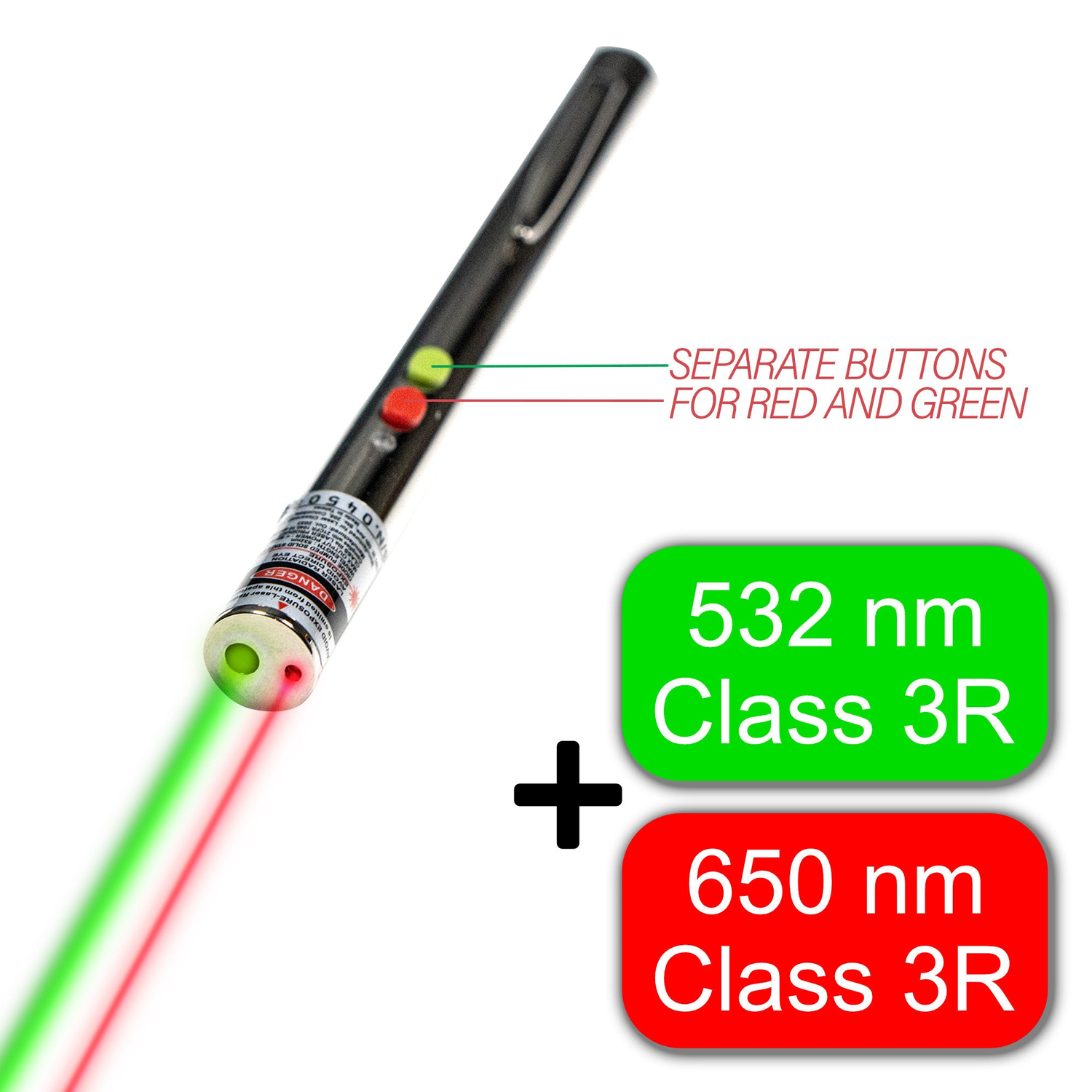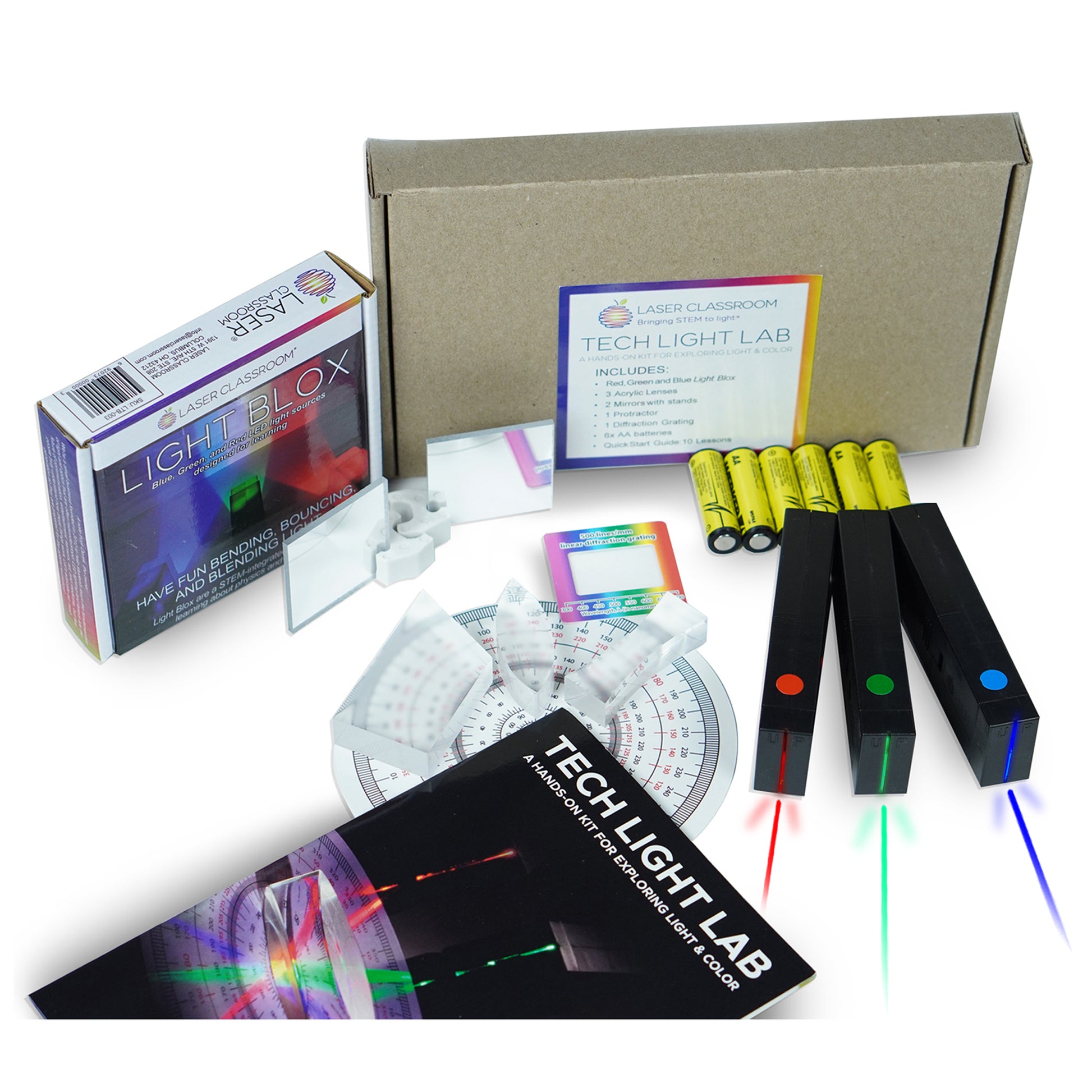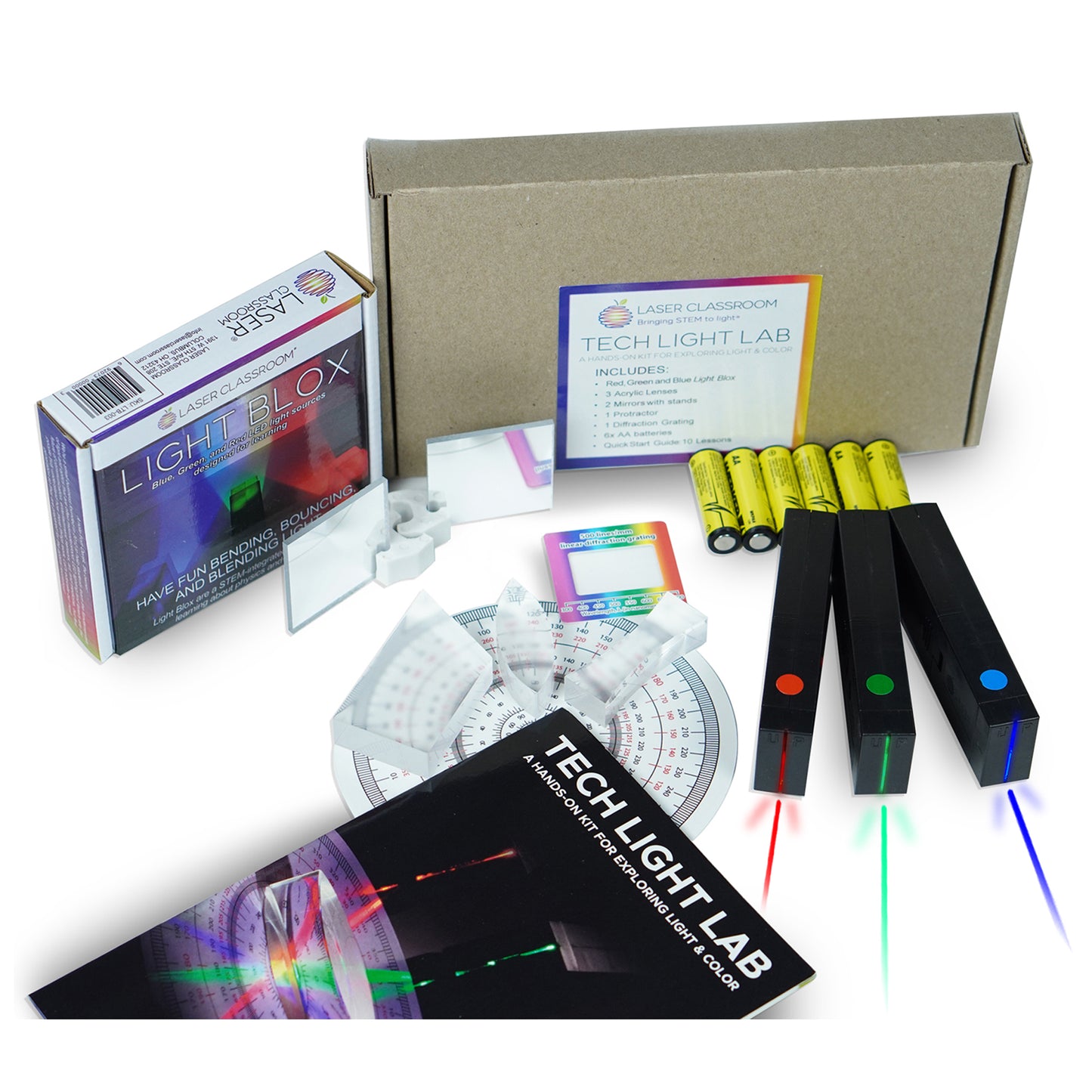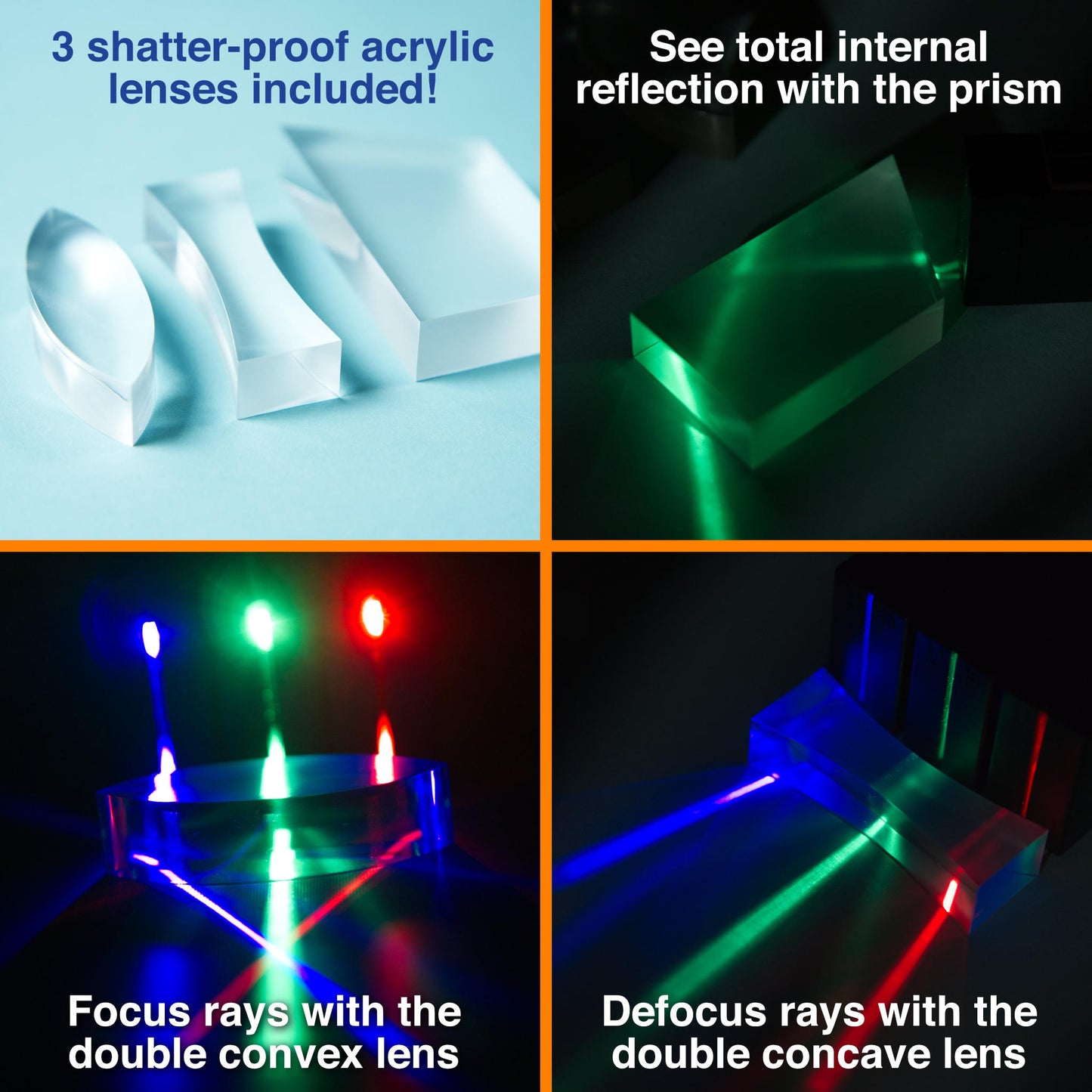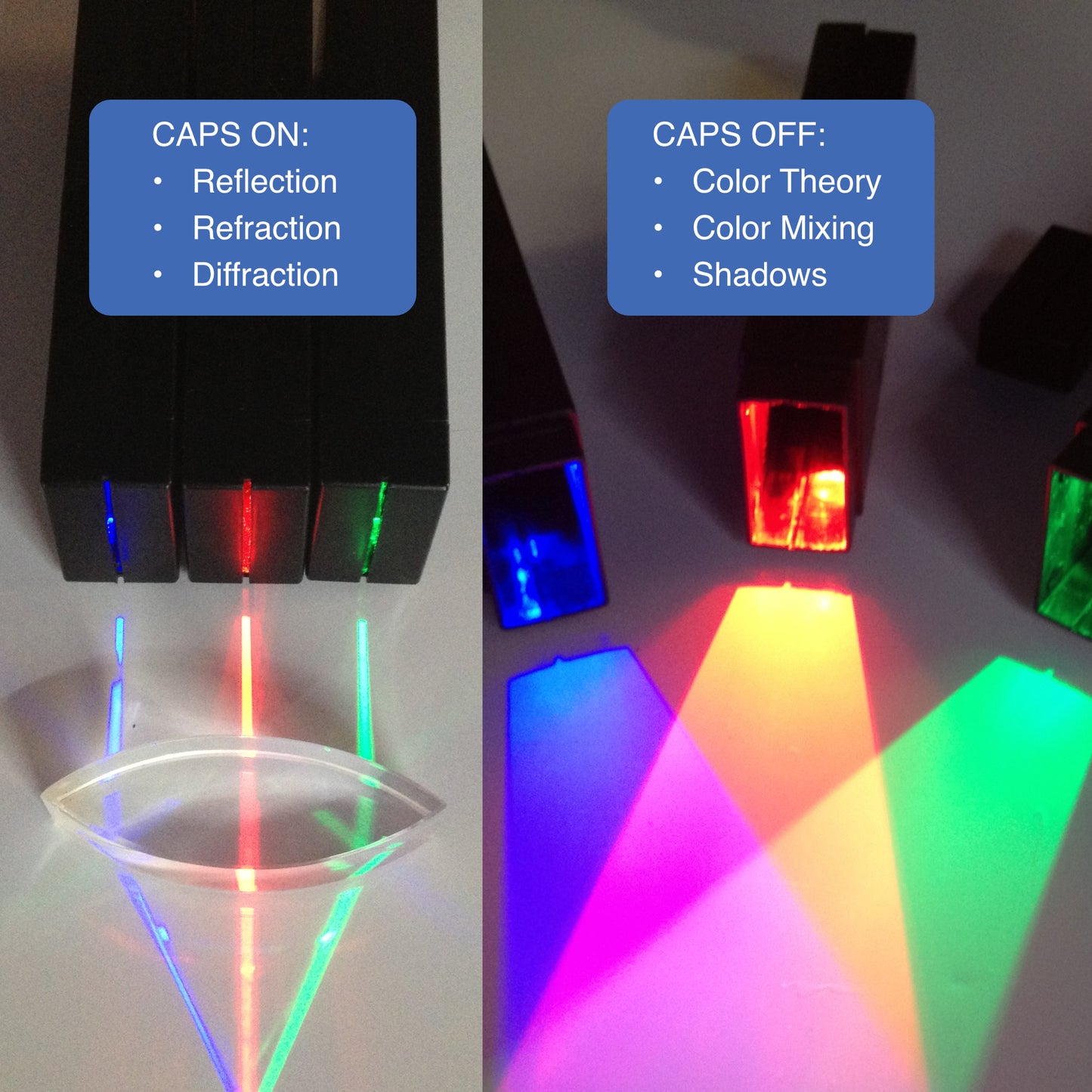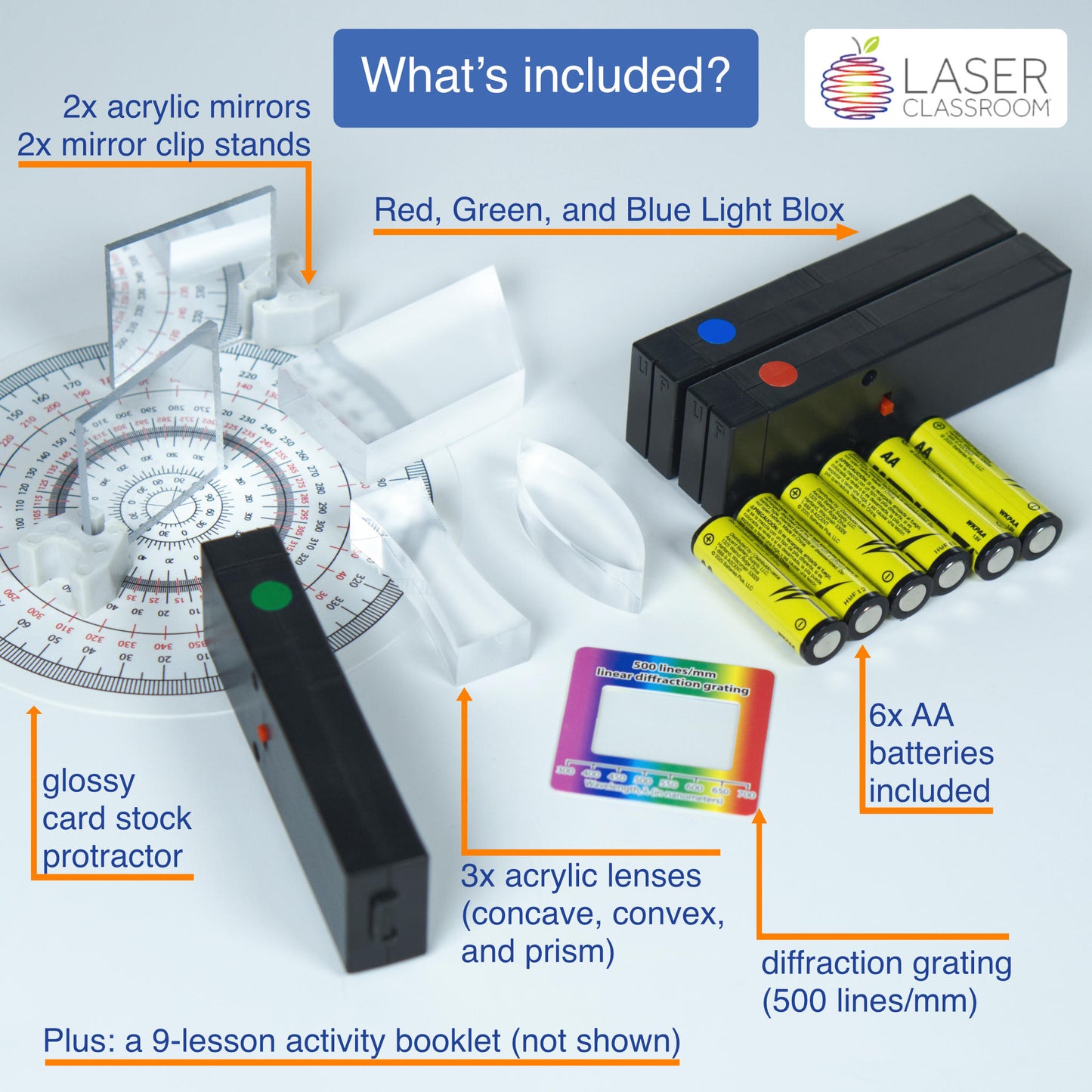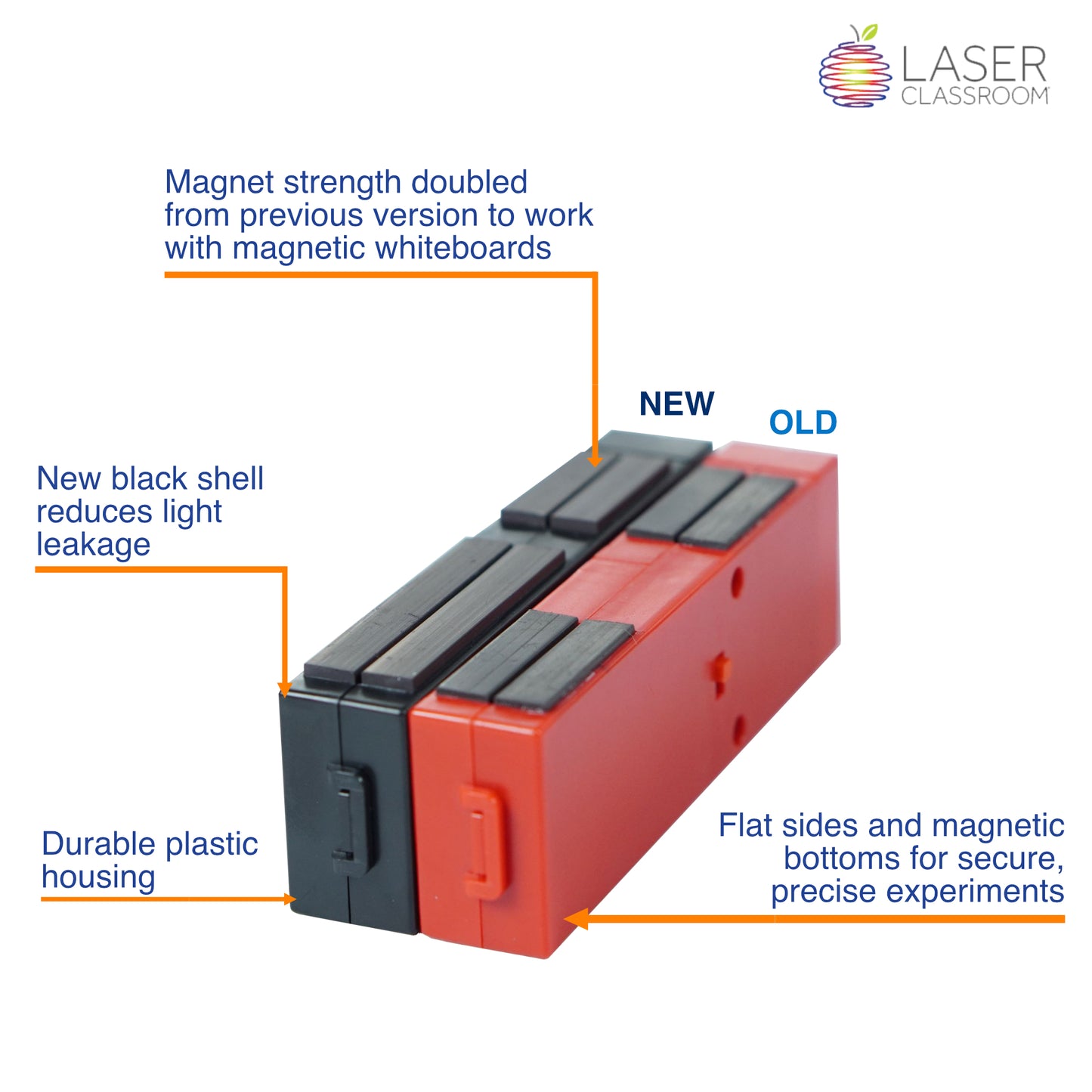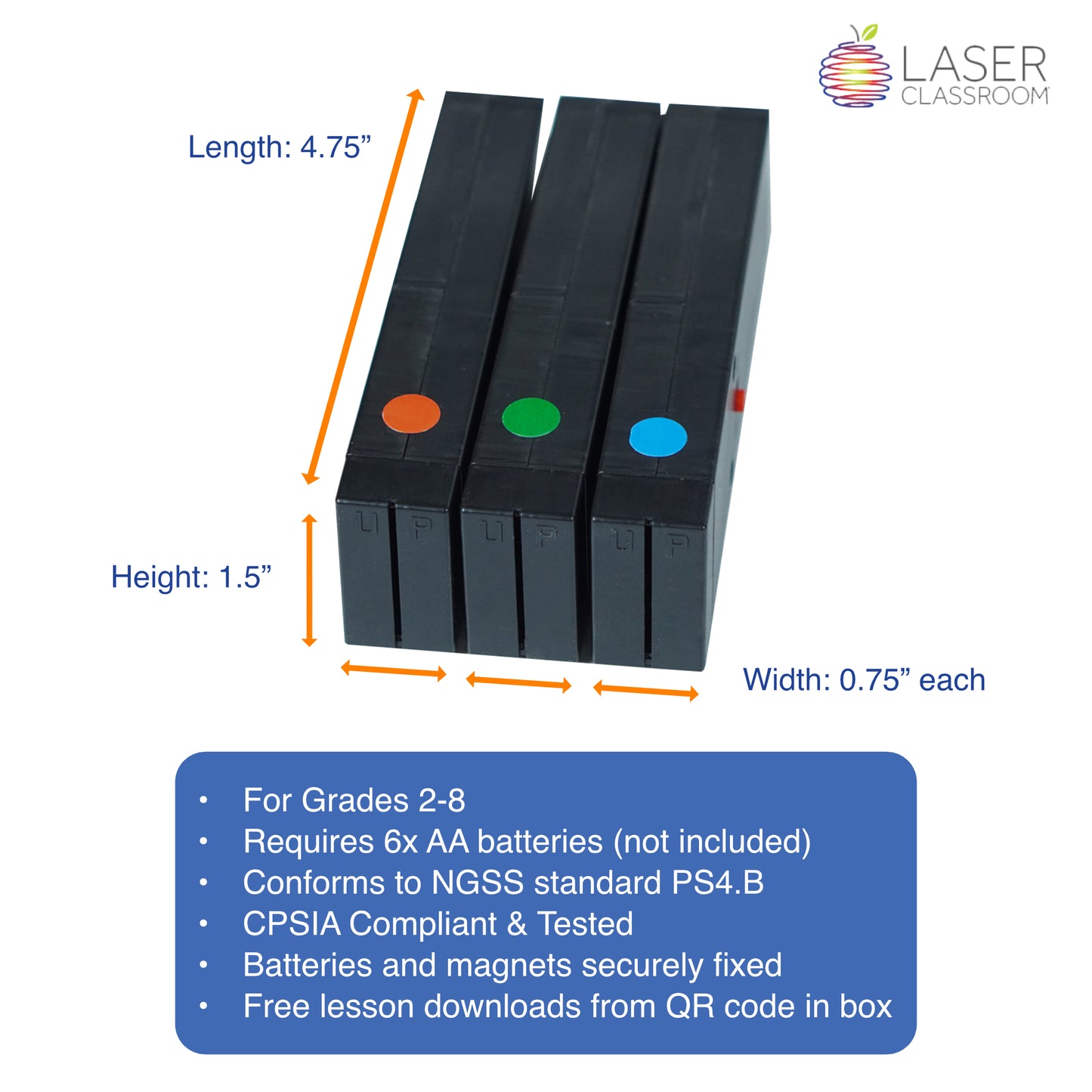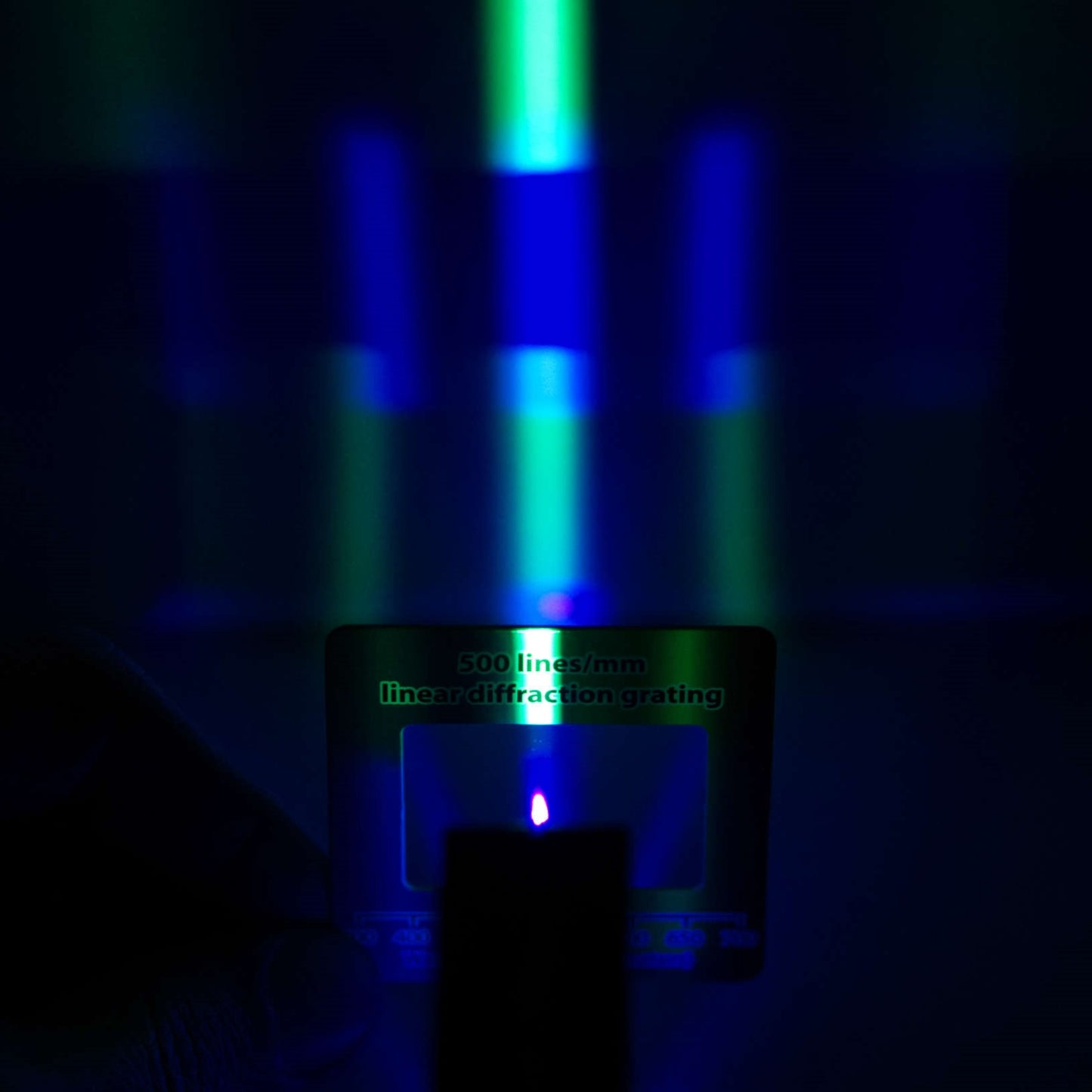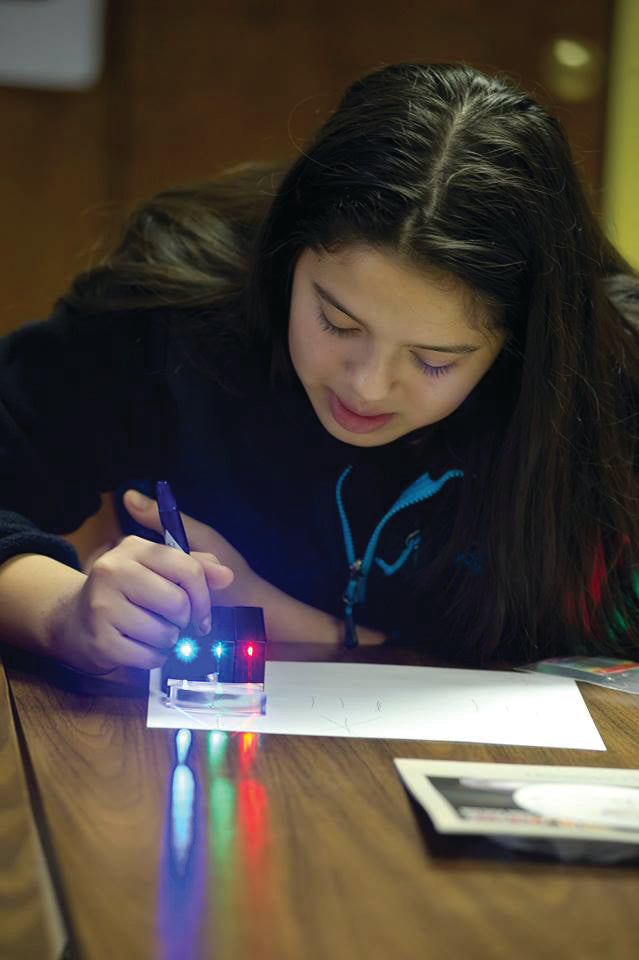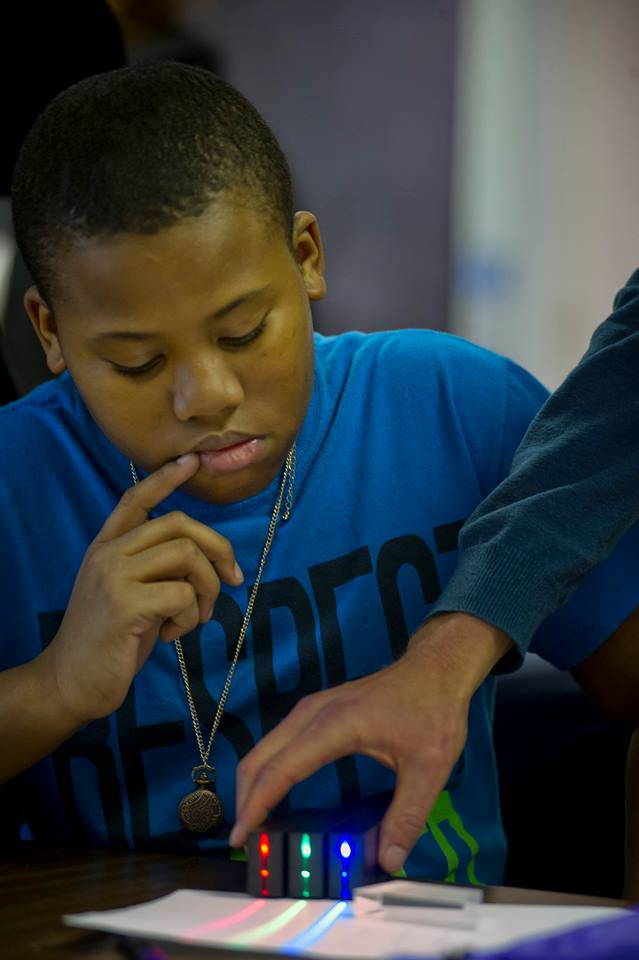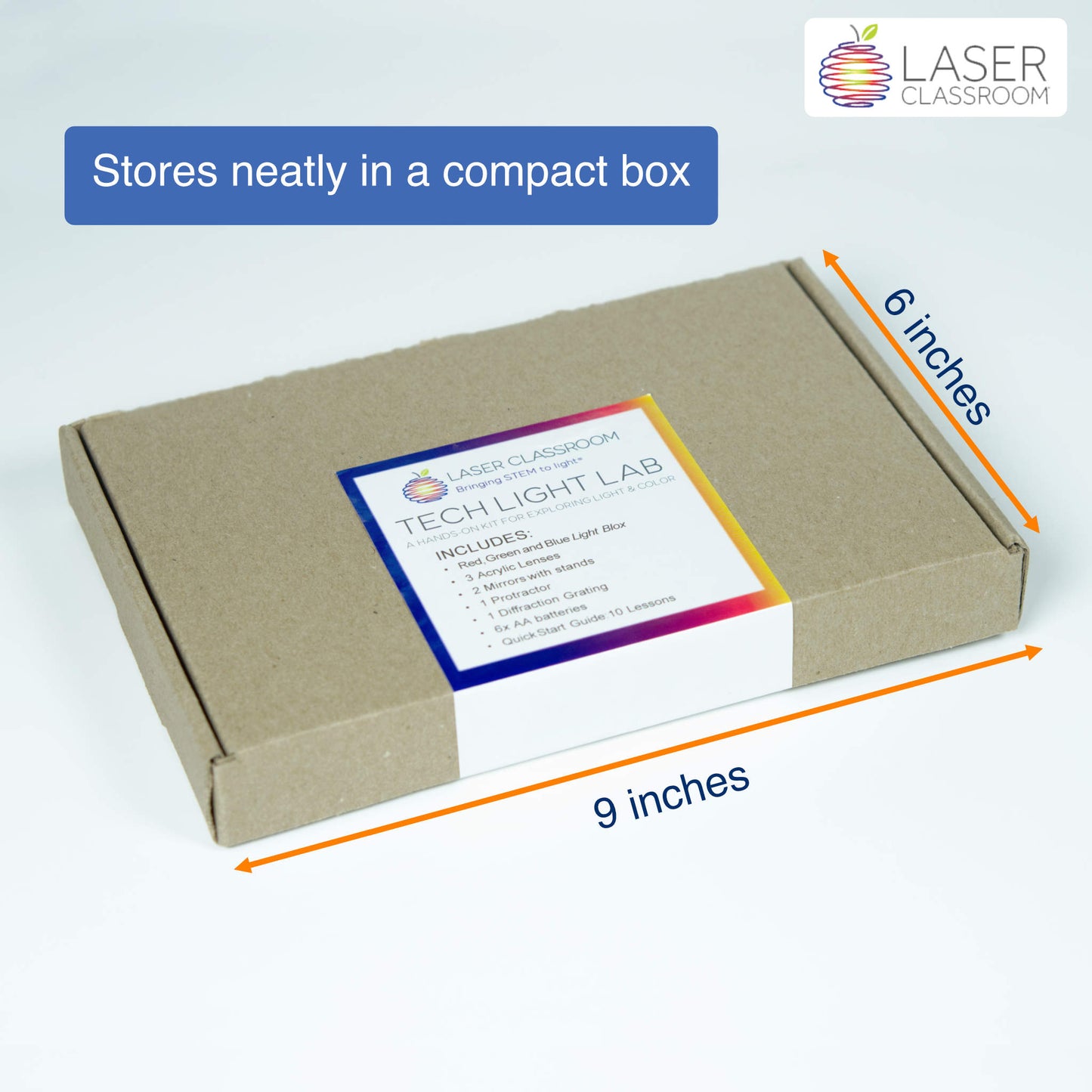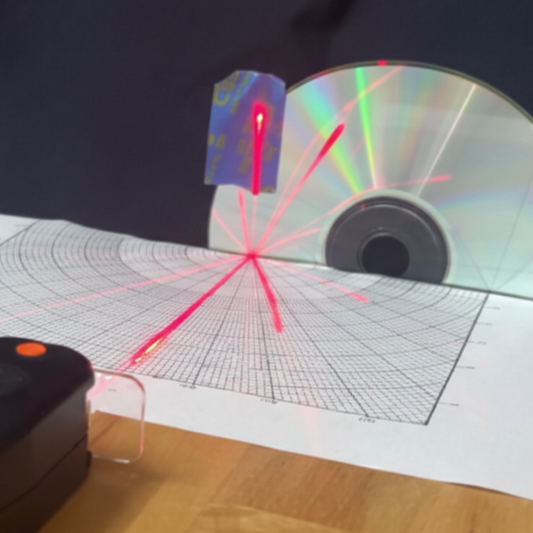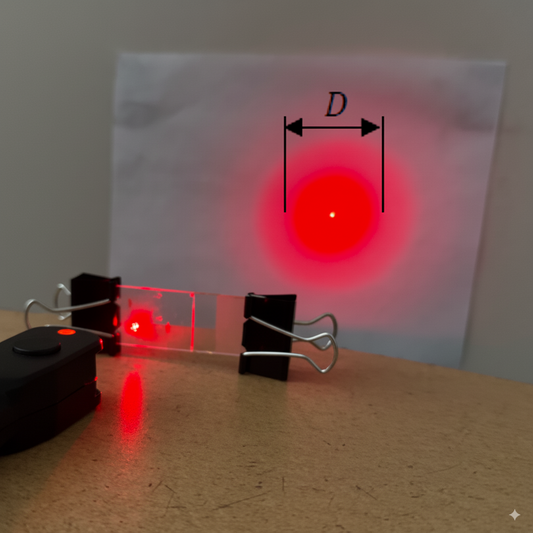This hands-on STEM lesson gives students the chance to measure something microscopic — the diameter of a red blood cell — using nothing more than lasers, a screen, and a prepared blood smear slide. By exploring diffraction patterns, students discover how light behaves when passing through tiny openings and obstacles, and apply physics equations to calculate the size of cells they can’t even see with the naked eye.
Grade Range: 9 to 12
Duration: 1 – 2 Hours
Supplies:
- Laser Blox in Red/Green/Violet
- Aluminum foil
- Pin
- Binder clips
- Ruler
- Prepared microscope slide with blood smear
- Paper for screen
NGSS Connections
- PS4.A: Wave Properties – Waves bend and interfere when passing through small openings.
- PS4.B: Electromagnetic Radiation – Light diffraction patterns can reveal the size of microscopic objects.
- Science and Engineering Practices – Using math to analyze patterns and carry out investigations.
- Crosscutting Concepts – Scale, proportion, and quantity (using macroscopic measurements to infer microscopic size).
